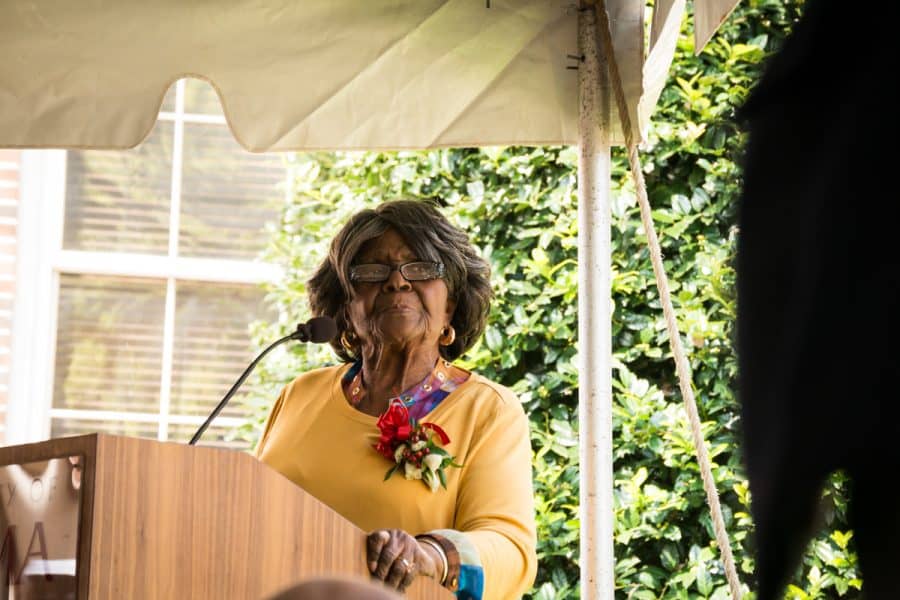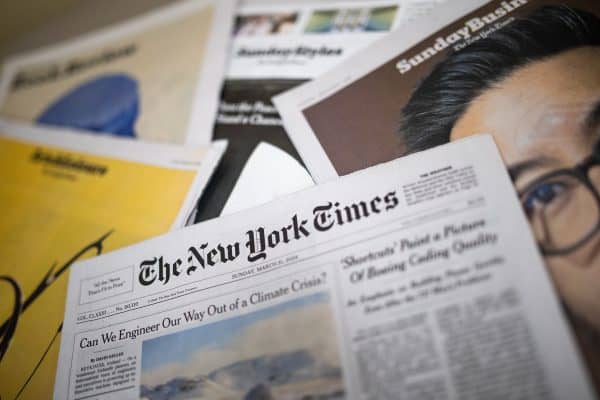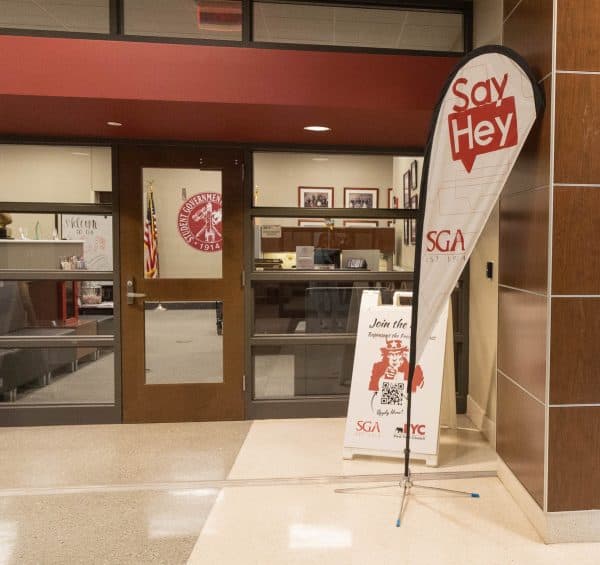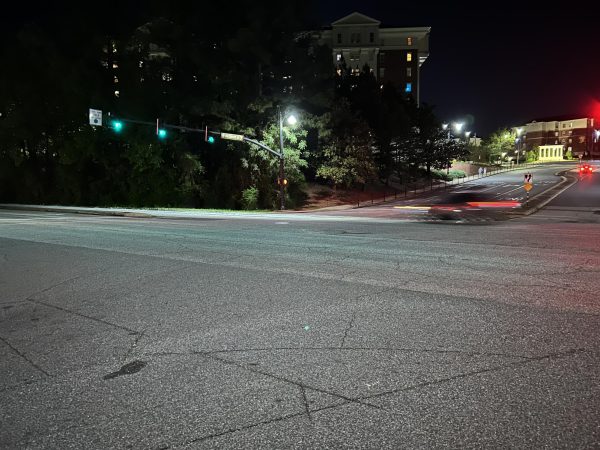Autherine Lucy Foster’s legacy honored with historical marker
September 18, 2017
Autherine Lucy Foster ended her third day of school in the annex of Graves Hall, where she was holed up for two hours before being escorted, face-down in a patrol car, to the safety of a nearby barbershop.
Outside, a mob of 3000 Klansmen, White Citizens Councilors and students waited for her, chanting, “Hey, Hey, Ho, Ho! Autherine Lucy’s got to go!” according to the account of E. Culpepper “Cully” Clark, a former UA dean.
But Foster heard something different.
“…These were the words that I heard they were saying,” she said. “‘Hey, Hey, Ho! Where the Hell did that n***** go?’”
Sixty-one years later, Foster stood where that mob stood, this time behind a podium and toward faces that weren’t angry, but eager. Behind her, red velvet veiled the newest addition to Graves’ lawn: a metal marker with Foster’s name in bronze letters.
“To the student body, and to all of you standing around, I want you to know that the last time I saw a crowd like this at The University of Alabama, I didn’t know what they were waiting for,” Foster said.
The crowd laughed. Seventy-seven of its members sat in reserved seating and were privately invited. For the rest of the 200 students and faculty in attendance, though, news of the unveiling spread through word of mouth — most of which did not reach social media until the day of the ceremony.
“If there had been as much [publicity] as there needed to be, people would have demanded [the ceremony] to be in Foster auditorium,” said Kalyn Lee, a former student who helped spearhead the event. “This is huge.”
Lee, along with former students Khortlan Becton, Steven Becton, Amanda Bennett and Elliot Spillers, had been working with Meredith Bagley, the associate professor of communication studies, since 2015 to bring Foster back to campus.
In its 2015 list of demands, the organization “We Are Done” requested the creation of historical markers to “glorify the accomplishments of African-Americans on campus.”
We Are Done, Lee said, started conversations across campus about how it feels to not be recognized in a place where your body has historically not been wanted.
“[Foster] started off at UA with mobs and individuals rejecting her presence,” Lee said. “…We wanted to give reverence to her.”
Members of the group met with Vice President David Grady biweekly at 8 a.m. for a semester to discuss the logistics of erecting a marker in Foster’s name. Eventually, the group began to meet with President Stuart Bell to put their plans into action.
“If you don’t know your history, you will forget your past,” Foster said. “So even when it hurts a little bit, we have to talk about it.”
Foster, 87, attempted to enroll at The University of Alabama in 1952, along with Pollie Myers. The two were admitted until University officials became aware of their race.
“When we appeared to complete our enrollment, we were told by Dean Adams that there was some mistake and that he could not admit us the University,” the two told the Crimson White in a 1952 article.
Attorneys Arthur Shores and Thurgood Marshall petitioned for the women to be admitted, and in the summer of 1955, a year after the Brown v. Board decision, a federal judge ordered the University to grant the women acceptance.
The University later denied Myers acceptance due to a pregnancy that she had outside of marriage.
In Feb. 1956, Foster became the first African-American student to be admitted and enroll at an all-white public school or university in Alabama.
Her attendance was cut short less than a week after being admitted, after just three days of classes, when she was met with anti-integration protests and bombarded with rotten eggs and produce as she was escorted from campus.
The University then suspended Foster, supposedly for her safety and the safety of other students. Shores and Marshall fought the suspension, accusing the University of conspiring with the protesters, and the University then expelled her for the conspiracy claims.
Peter Hlebowitsh, dean of the College of Education, recalled the events of Foster’s last day as a student in 1956, and said that her actions “liberated” the University.
“All that (Foster) did led to the success that we had here in 1963 when Vivian Malone and James Hood walked past Governor Wallace at the schoolhouse door and effectively enrolled,” Hlebowitsh said.
Foster’s expulsion was later annulled in 1988. Foster returned to the University in 1989 and earned her master’s in education in 1992.
“I felt so great going down the aisle to get my [bachelors] degree,” Foster told the CW in 1992. “I want to wear my master’s robe. It’s something I’ve always wanted to do.”
President Stuart Bell called Foster’s actions a legacy for the University that continues today.
“Quite frankly without your courage and without your bravery, we would not enjoy the great university as we have it today,” Bell said. “We stand in awe at your remarkable courage that you showed at that time and also through the years and today it is that courage that we recognize through this historical marker that we celebrate today.”
Foster spoke to students during her speech and said that she loved and respected them and encouraged them to perform well in their college careers. After her speech, she stayed to take pictures and talk with students who wanted to meet her.
“I want you to do well at this college because I believe that it is one of the best colleges in the world, don’t you?” Foster said.
In 1992 Foster told the CW that she loves Alabama and the University, and that she doesn’t blame the institution for what happened.
“Racism still exists on Alabama’s campus,” Foster said. “I cannot blame that on the institution… It’s not a utopia yet.”
Brittany Burden-Knox, a senior marketing student at the University, said she attended the ceremony because Foster helped pave the way for her and other African-American students to attend public universities and schools in Alabama.
“It’s very important for me to come, because I wouldn’t be here without what happened, so it was a great experience,” she said.












